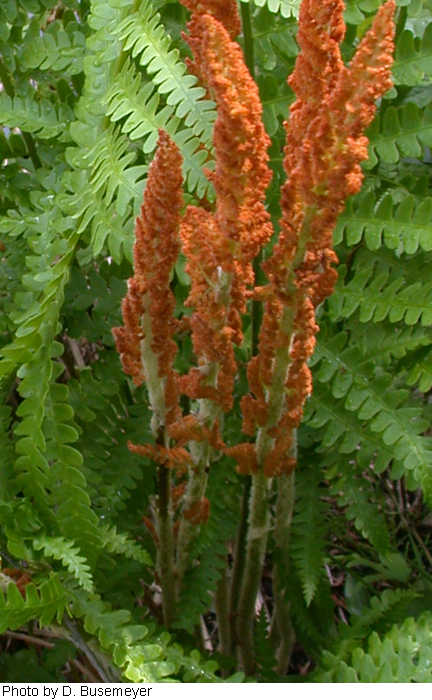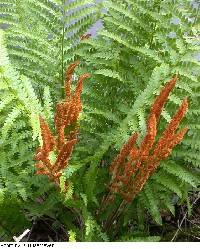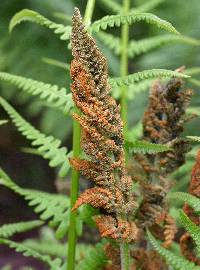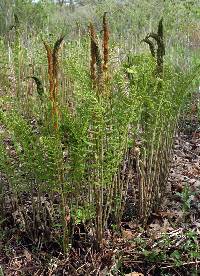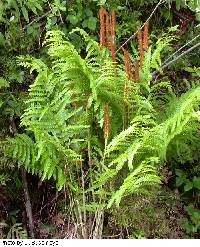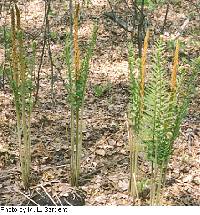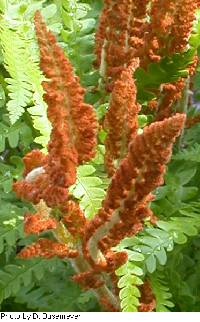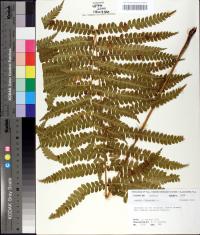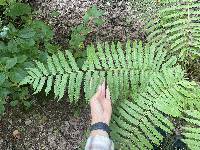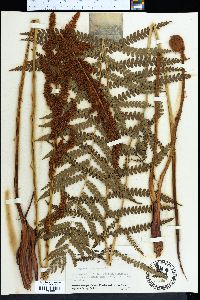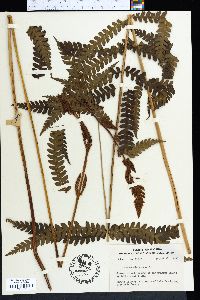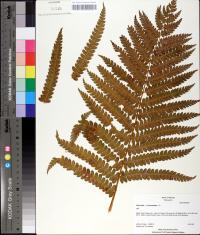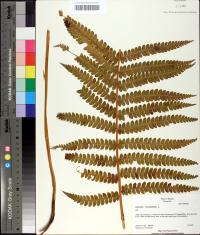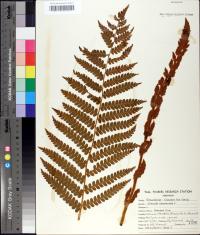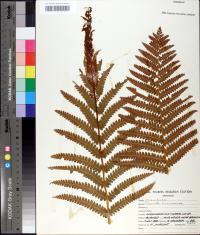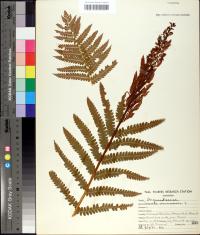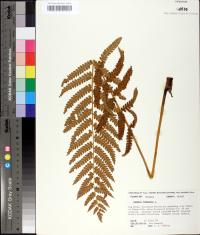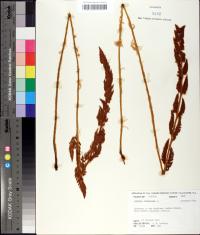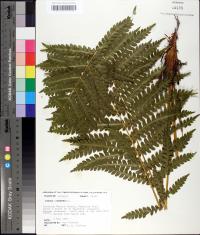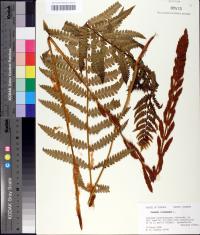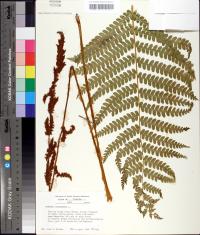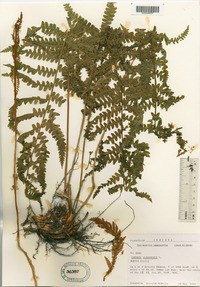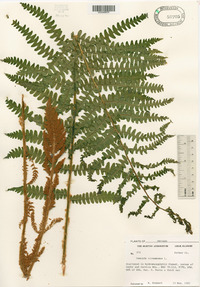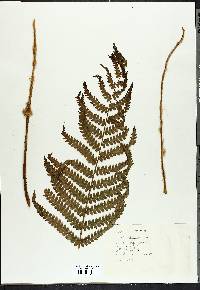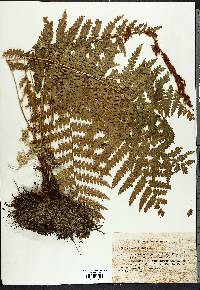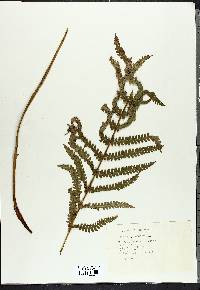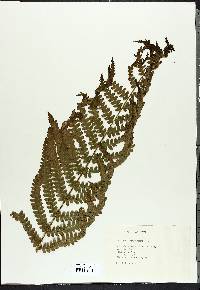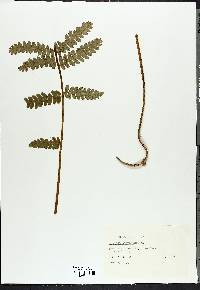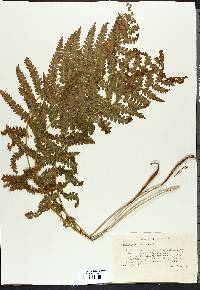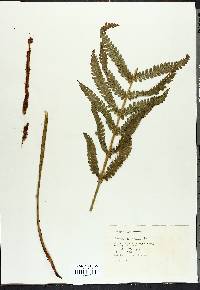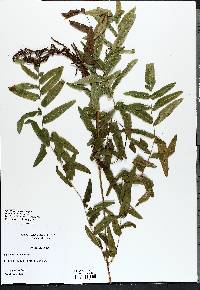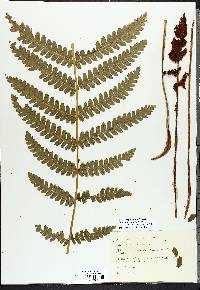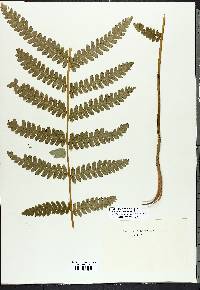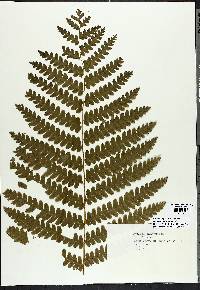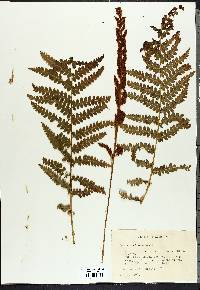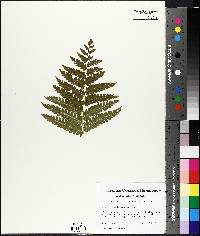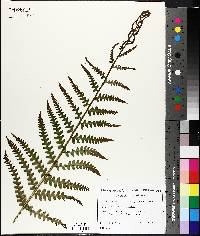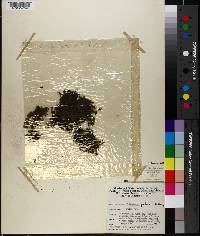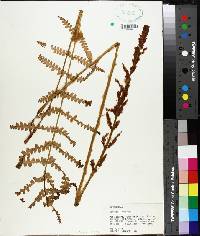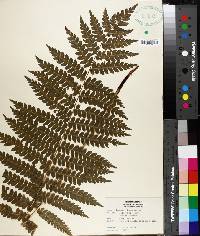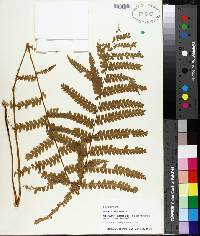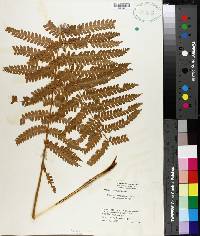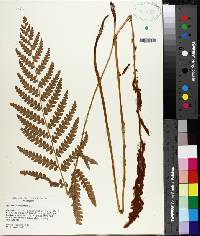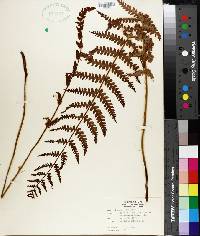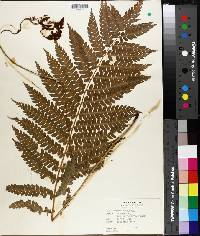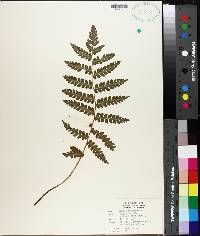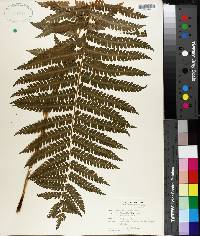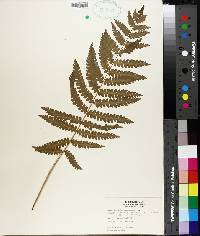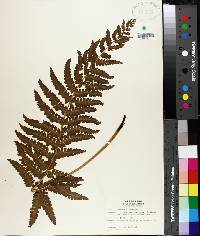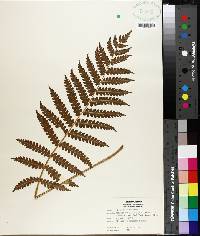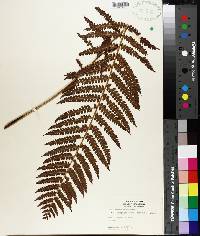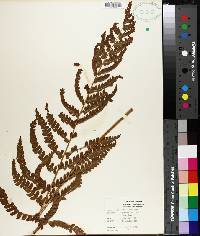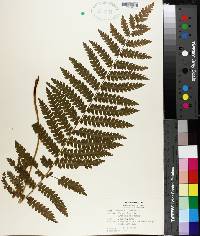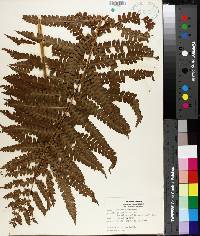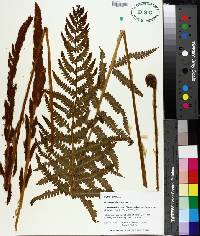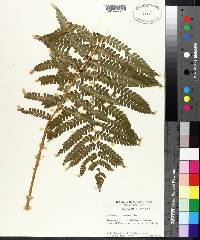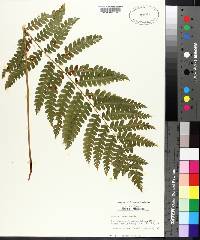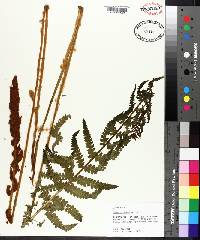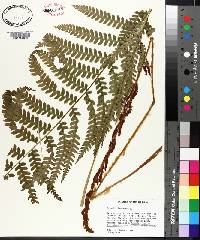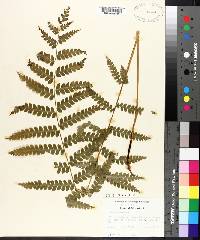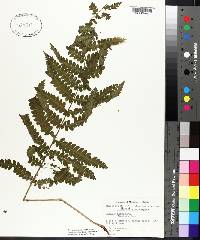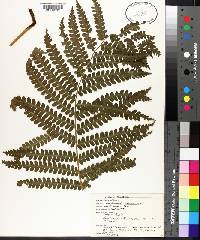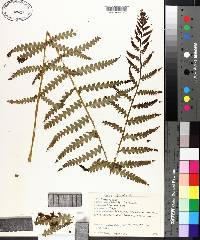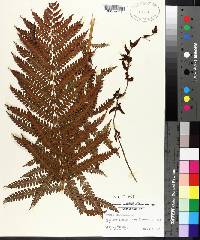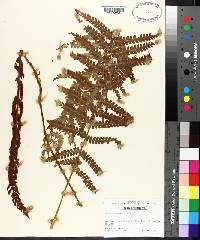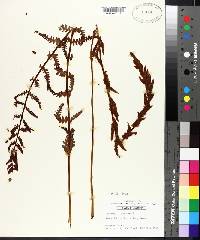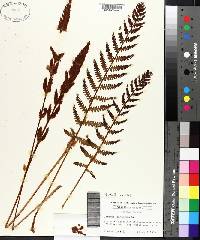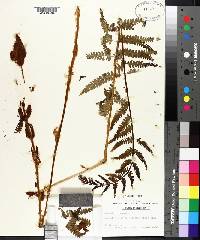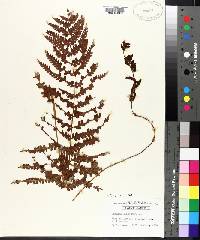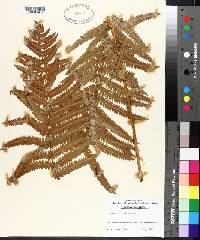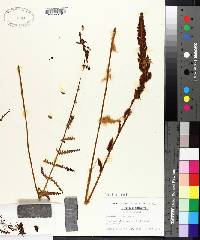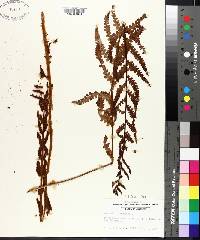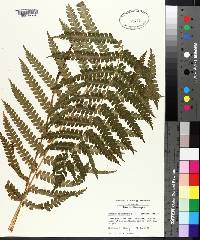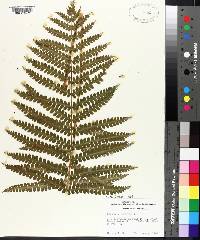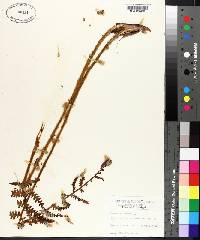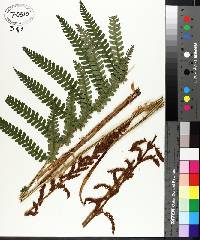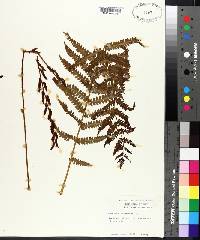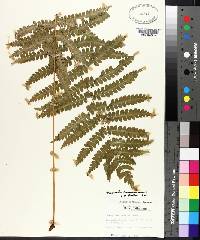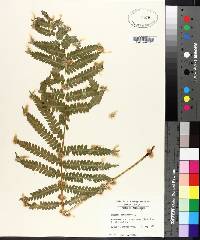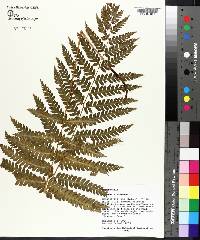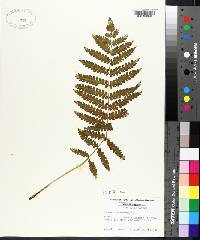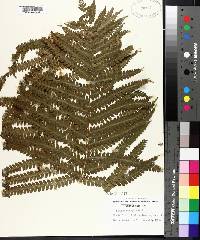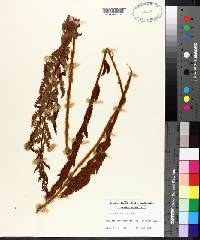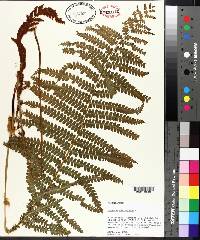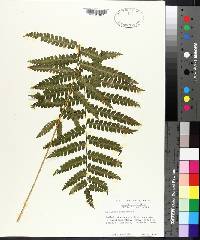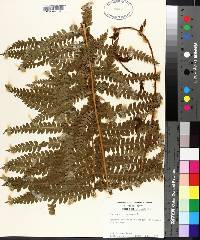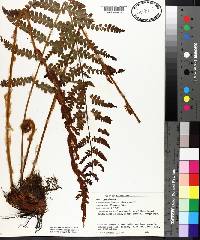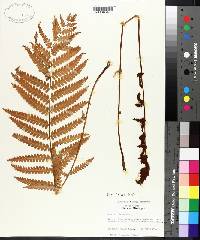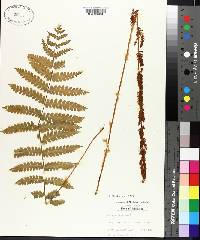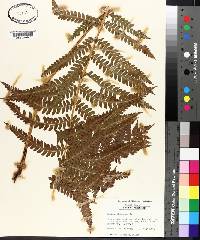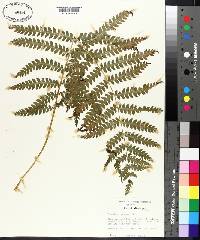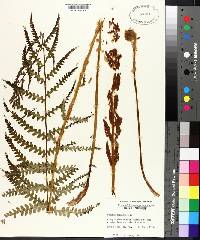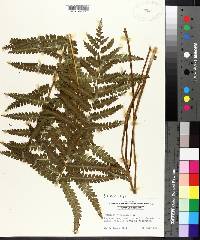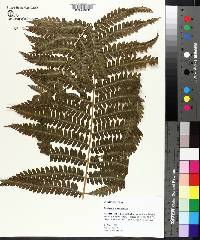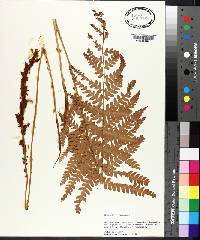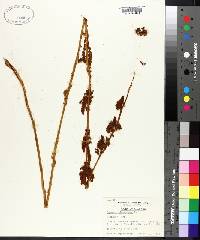
|
|
|
|
Family: Osmundaceae
Cinnamon Fern, more...Cinnamon Fern
[Osmunda cinnamomea L., moreOsmunda cinnamomea f. frondosa (Torr. & A. Gray) Britton, Osmunda cinnamomea var. auriculata Hopkins, Osmunda cinnamomea var. cinnamomea L., Osmunda cinnamomea var. frondosa A. Gray, Osmunda cinnamomea var. imbricata (Kunze) Milde, Osmunda cinnamomea var. incisa Huntington] |
Perennial fern 0.6 - 1.6 m tall Leaves: several, clustered, mostly erect, arising from the top of rhizome near ground level, and held on stalks covered with light brown hairs, which fall off with age. The leaf blades are pinnately compound with the segments (pinnae) further pinnately-lobed. Two kinds of leaves are produced: sterile and fertile. Rhizomes: frequently clumped, short-creeping with often partially erect tips, covered by remnant bases of old leaf stalks, and with black, fibrous roots. Spores: numerous, all alike, green, and contained in cinnamon-brown sacs (sporangia) on the fertile pinnae. The spores are released in early May and June, and give rise to the gametophyte (the sexual phase of the plant), which is small, green, inversely heart-shaped to elongate, and sits above the ground. Sterile leaves: several, mostly erect, stalked, shiny green, relatively firm, 30 cm - 1.5 m long, pinnately divided, but egg-shaped to lance-shaped in outline with a long, tapering, pointed tip. Fertile leaves: one to several, surrounded by sterile leaves, erect, stalked, greenish brown to brown, with long, reddish brown hairs along central "stalk" (rachis). The blades are also pinnately divided, but overall shorter and narrower than the sterile leaves, and they wither after the spores are released. Similar species: Osmunda cinnamomea is quite similar to O. claytoniana, but that species typically does not have tufts of reddish hairs in the pinnae axils, and further, the fertile leaves have sterile sections of larger pinnae on the same leaf, which interrupt the fertile pinnae. If no fertile leaves are present however, the two species are incredibly similar, except O. claytoniana tends to have more abruptly narrowed or blunt-tipped sterile leaves with the pinnae on those leaves similarly blunt or abruptly narrowed. The only other Osmunda in the Chicago Region, O. regalis var. spectabilis, is quite different since its leaves are pinnately compound two times. Habitat and ecology: Fairly common, in peaty areas, springy places, and swampy woodlands. Occurence in the Chicago region: native Notes: The common name for this species, Cinnamon Fern, refers to the fertile fronds, which are superficially similar to cinnamon sticks in both color and shape. Author: The Field Museum Lvs clustered, 6-12(-16) dm; petiole densely woolly when young; blade pinnate-pinnatifid, dimorphic, the sterile ones oblong, to 3 dm wide, relatively firm, shining green, gradually tapering to the tip, as also the individual pinnae; pinnae oblong-lanceolate, sessile, 15-25 pairs, alternate or subopposite, to 15 נ3 cm, with a tuft of brownish hairs at the base, deeply pinnatifid, the segments 15-20 on a side, alternate, broadly oblong, obtuse or subacute, usually entire, laxly ciliate, the veins 9-12 pairs per segment; fertile lvs vernal, central, surrounded by the larger sterile outer ones, soon withering brown, essentially bipinnate, the rachis long-woolly, the pinnae 2-4 cm נ8-15 mm; sporangia cinnamon-brown; 2n=44. Swamps, streambanks, and other moist places in subacid soil; Lab. to Minn., s. to Fla., Tex., N.M., and trop. Amer.; e. Asia. Ours is var. cinnamomea. Gleason, Henry A. & Cronquist, Arthur J. 1991. Manual of vascular plants of northeastern United States and adjacent Canada. lxxv + 910 pp. ©The New York Botanical Garden. All rights reserved. Used by permission. From Flora of Indiana (1940) by Charles C. Deam Frequent in the lake area, becoming infrequent to local south of it. In the lake area it is usually common in tamarack bogs and swamps about lakes, and in the southern part of the state it grows in low, flat woods, associated with sweet gum and red maple. Throughout its range it is found only in wet soil in bogs or about ponds and marshes and rarely on shaded slopes. [Deam describes three forms. Forma auriculata] has the basal segments much elongated and deeply and sharply toothed on the lower side or rarely on both sides. The other segments are normal or nearly so. It has been found in Porter County by R. M. Tryon, Jr. [Forma frondosa] has the fertile frond partly leafy, the fertile and sterile pinnae variously intermixed. I found this unusual form in Lagrange County and Nieuwland found it in St. Joseph County. [Forma incisa] usually has acutely toothed or lobed segments. I found it in De Kalb County. …… Indiana Coefficient of Conservatism: C = 9 Wetland Indicator Status: FACW |
|
|
|

